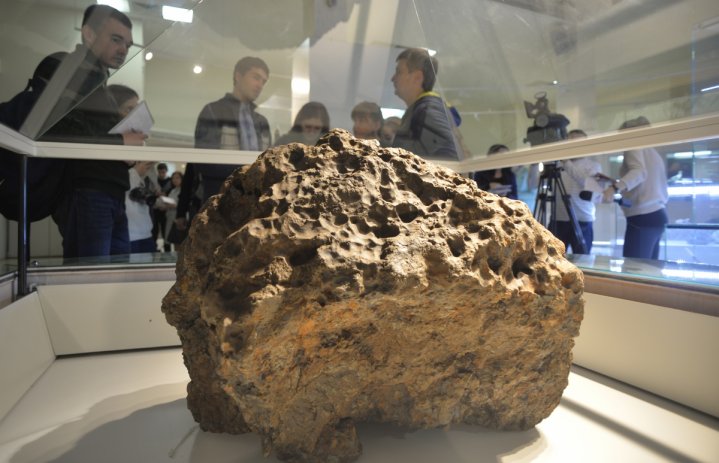
A pair of 4.5-billion-year-old meteorites had hit the earth in 1998 and the secrets that these meteorites were carrying remained hidden until recently. Now, researchers have discovered that those two meteorites, which had crashed into earth separately in the same year, contained the elements needed to form life – hydrocarbons, amino acids, other organic substances and, of course, water in liquid state.
The researchers conducted a thorough study of the little blue and purple coloured salt crystals, which were gathered from the two meteorites, namely Monahans and Zag. The complete analysis of its chemical-makeup revealed pieces of evidence related to the pair's probable sources and also their previous mergers. It included the famous Ceres, the largest object and a dwarf planet in an asteroid belt, from where a large number of meteorites tend to drop on our home planet. The findings were first published in Science Advances.
One of the meteorites had hit an area in Texas near a children's basketball match in March 1998; while the other had smashed near Morocco the same year in August.
"It's like a fly in amber," stated David Kilcoyne, a Berkeley Lab's Advanced Light Source (ALS) scientist. ALS provided the research with the X-rays, with which the experts were able to scan the salt samples. Their organic chemical components include oxygen, nitrogen and carbon. David Kilcoyne was a member of the study. The presence of these organic components doesn't prove the existence of alien life forms, stated Kilcoyne, reported Science Daily.
"This is really the first time we have found abundant organic matter also associated with liquid water that is really crucial to the origin of life and the origin of complex organic compounds in space. We're looking at the organic ingredients that can lead to the origin of life," stated the lead author of the study Queenie Chan, who is also a planetary scientist at The Open University, U.K.
If, indeed, life existed in some form or the other in the ancient universe, these meteorites elevate the "possibility of trapping life and/or biomolecules" inside their salt crystals, mentioned the study. The water molecules in the space rocks are believed to be of a time when our solar system was nothing but an infant, which is around 4.5 billion years ago.
According to Chan, the resemblance of both the meteorites' crystals suggests that their asteroid parents might have had a collision and exchanged each other's materials. This concept, if true, opens up new avenues of research as to how the organic substances might have passed from one space to rock to the other. "Things are not as simple as we thought they were," stated Chan.
Also Read: Oumuamua is not a spy but natural icy celestial body
There is also a possibility that the salt crystals of these meteorites might have originally been deposited on the space rocks by some water-or ice-discharging volcano from Ceres, suggested Chan. "Everything leads to the conclusion that the origin of life is really possible elsewhere. There is a great range of organic compounds within these meteorites, including a very primitive type of organics that likely represent the early solar system's organic composition," she added.









